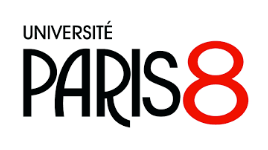12h00
59/61, rue Pouchet, Paris; salle 159
Sho Tsuji and Christina Bergmann (LSCP, Ecole Normale Superieure)
Infant Phonology Meta-Analyzed
Abstract - When carefully looking into a research topic, we often find a multitude of relevant findings, some providing converging evidence, others not. A qualitative comparison of these findings can prove problematic due to differences in stimuli, methods, and statistics on the outcomes. Meta-analysis provide a quantitative way to combine all data on a well-defined topic, serving not only the purpose of getting a better look at the underlying "true" effect and its variance, but also to estimate how many participants are necessary in a future study (power analysis) and to integrate seemingly conflicting findings into a coherent framework.
We present three meta-analyses that offer a new perspective on three aspects of infant phonology. The first meta-analysis addresses perceptual narrowing in vowels, with results from over 200 behavioral and neuroimaging experiments ran on approximately 3,000 infants (Tsuji & Cristia, 2014). The second meta-analysis focuses on recognition of words in natural speech; about 4,000 infants have participated in more than 200 behavioral experiments (Bergmann & Cristia, 2015). The third meta-analysis discusses sound symbolism from infancy to preschool age, currently including 37 datapoints from 373 children.
Analyses of standardized effect sizes in each dataset revealed that method (e.g., headturn preference versus central fixation) accounts for some of the structured variance, suggesting that caution is needed when interpreting infants’ success and failure patterns in different paradigms. Additionally, each dataset confirmed some widespread assumptions (e.g., native vowel discrimination increases with age, p < .05; words at sentence edges are better recognized, p < .05; children do perform sound-symbolic matching), and challenged others (e.g., switch from familiarity to novelty preferences with age; effect of native language in word segmentation; differences in sound-symbolic matching across round and spiky shapes). These examples illustrate the unique holistic perspective allowed by meta-analyses.
We end the talk by presenting the concept of community-augmented meta-analyses, which are dynamic and can be used and extended by fellow researchers. These online databases circumvent the ageing of published meta-analysis by providing an up-to-date summary of the literature, and they allow users to directly extract relevant measures for experimental planning via user-friendly interfaces.



